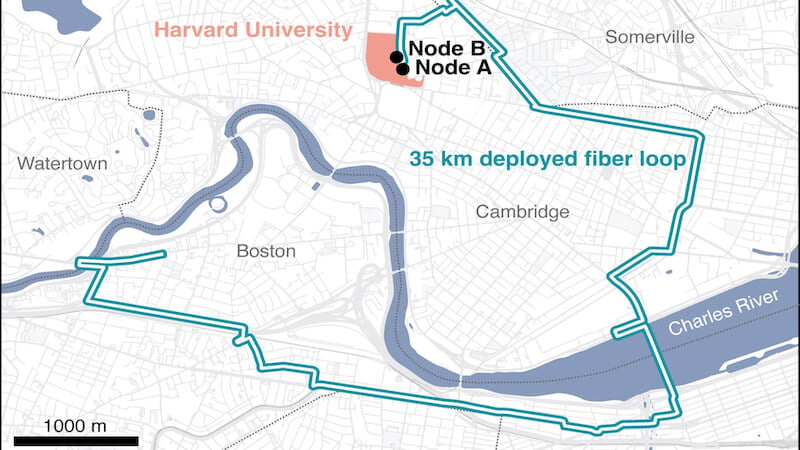
Harvard physicists have demonstrated the first quantum computer network in a major urban area in Boston. The goal: a quantum internet that transmits information securely and extremely quickly.
What will the computer systems of the future look like? Will we continue to use computers that follow today's approaches or will we all one day switch to state-of-the-art quantum computers? The latter, at least, are likely to become more widespread in the coming years. To ensure that the necessary infrastructure is available, Harvard physicists recently demonstrated the world's first urban quantum network.
This network, which is based on existing telecommunications fibers in the greater Boston area, represents a significant step forward in the realization of a quantum internet. Experts hope that it will create an environment in which data is transmitted globally using photons in various quantum states, securely and protected from third parties.
Quantum Internet: Quantum network in Boston stretches over 35 kilometers
The team succeeded in entangling two quantum memory nodes via an optical fiber connection that runs along a 35-kilometer loop through Cambridge, Somerville, Watertown and Boston. The nodes are located on different floors of the Harvard Laboratory for Integrated Science and Engineering.
These are small quantum computers made of diamond disks with special defects, the so-called silicon vacancy centers. These centers contain two qubits. The team used the electron spin for communication, while a longer-lived nuclear spin acted as a storage qubit.
The researchers controlled both spins with microwave pulses. The diamond devices are only a few millimeters in size and are housed in cooling units. Temperatures there can reach as low as minus 273 degrees Celsius.
Light entangles at minus 273 degrees Celsius
The use of silicon vacancy centers as quantum storage devices solves a central problem of the theorized quantum internet. Signal loss often occurs, which the system cannot reduce as in conventional networks. Therefore, these centers capture, store and entangle the quantum information and correct signal losses in the process.
After cooling the nodes to near absolute zero, a laser sends light through the first node, which entangles with it due to the atomic structure. The project shows that we can entangle quantum network nodes in a real urban environment.
This is an important step toward one day developing networks of quantum computers. In the future, the team plans to work on improving the performance of its network by adding more nodes and experimenting with new network protocols.
Also interesting:
Source: https://www.basicthinking.de/blog/2024/05/28/quantennetzwerk-boston/


